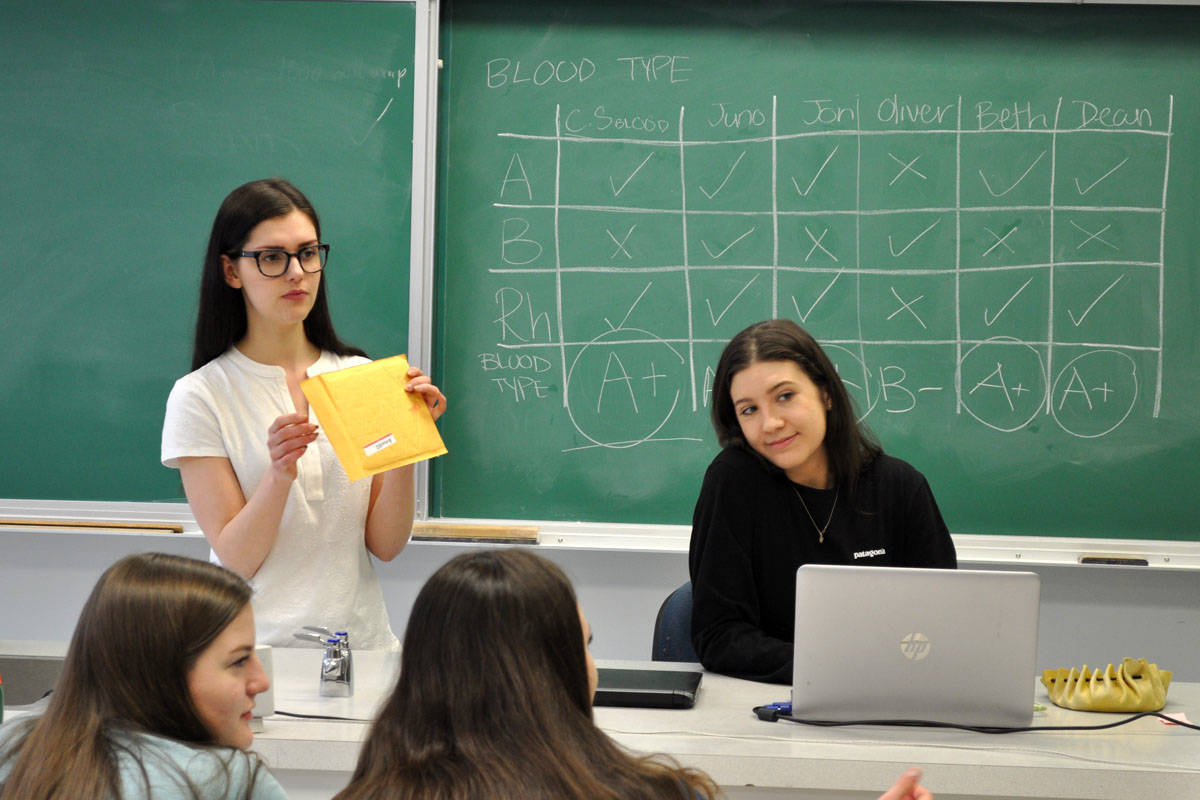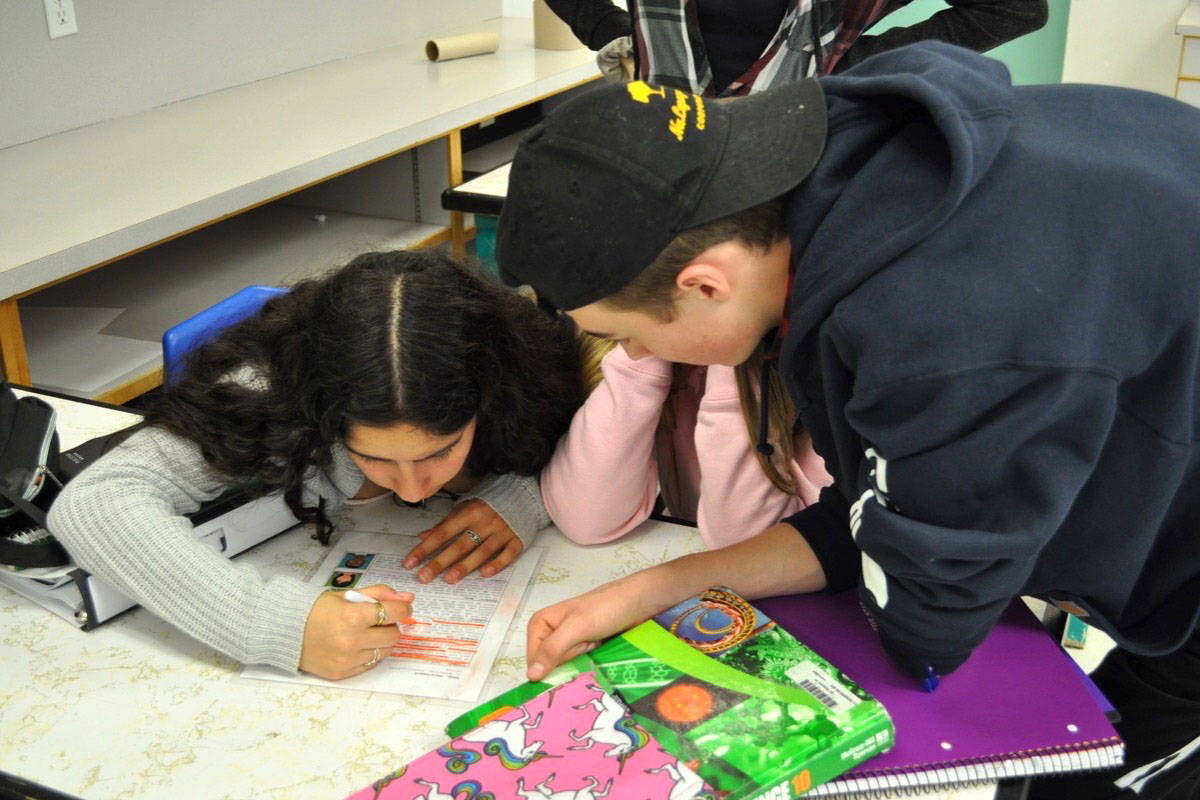Kyle Connor was murdered on a camping trip in Northern Ontario, and it was on Nelson high school students to figure out whodunnit.
Connor led five friends — girlfriend Juno, ex-girlfriend Beth, cousin Oliver, coworkers Dean and Jon — on the trip, but forgot a map and got lost. He was then found dead one morning near where the group had set up their tents.
Cue L.V. Rogers students, who were tasked with completing a number of forensic experiments to determine who killed Connor. The workshops, which ran April 3 to 6, were part of the Genome BC’s Geneskool Education Program meant to provide students with hands-on experiments studying genomics.
Colin Prentice, a teacher candidate at LVR who assisted in a workshop for Grade 10 students on Friday, said the murder mystery experiments were a good demonstration of real-world science that can often seem abstract to students.
“We drill pretty hard on these fundamentals, these theories, but they don’t always actually get a chance to practise the science they are learning,” said Prentice. “So to see this simulation where they get to take that science and apply it to solve a mystery is a really cool and unique experience.”
Investigating the mystery included activities such as fingerprint analysis, blood-type detection (using pH indicators instead of real blood) and learning about antibodies and antigens.
The workshops were led by Genome BC volunteers and UBC post-grad students Claudia Langemeyer, Dania Kallas and Julia Mang. Langemeyer said she thought the mystery scenario hooked in LVR’s students.
“I really like working with teenagers,” she said. “I think it’s quite funny the things they come up and they have this untainted curiosity and it’s really sweet to tune back into that.”
Caleb Morton, a science teacher at LVR, said one advantage of the workshops was to show students there are education and career opportunities in the sciences after high school.
Kallas, for example, is studying an inherited heart disease that causes sudden death in children, while Mang’s research focuses on autism.
“Normally kids in Grade 11 and 12, you ask them about sciences and what are you going to be, they say, ‘I am going to be a doctor. I am going to be a dentist.’ And there’s absolutely no way they have a specification,” said Morton.
“So these people maybe allowed the students to have this feeling, ‘You know, it’s okay to not know exactly what I’m going to do, but just to be in the field of science opens up many possibilities.’”
As for the mystery, blood analysis and a timely confession before the bell rang showed what several students said they had already figured out — Beth totally killed Kyle.
tyler.harper@nelsonstar.com
Like us on Facebook and follow us on Twitter

